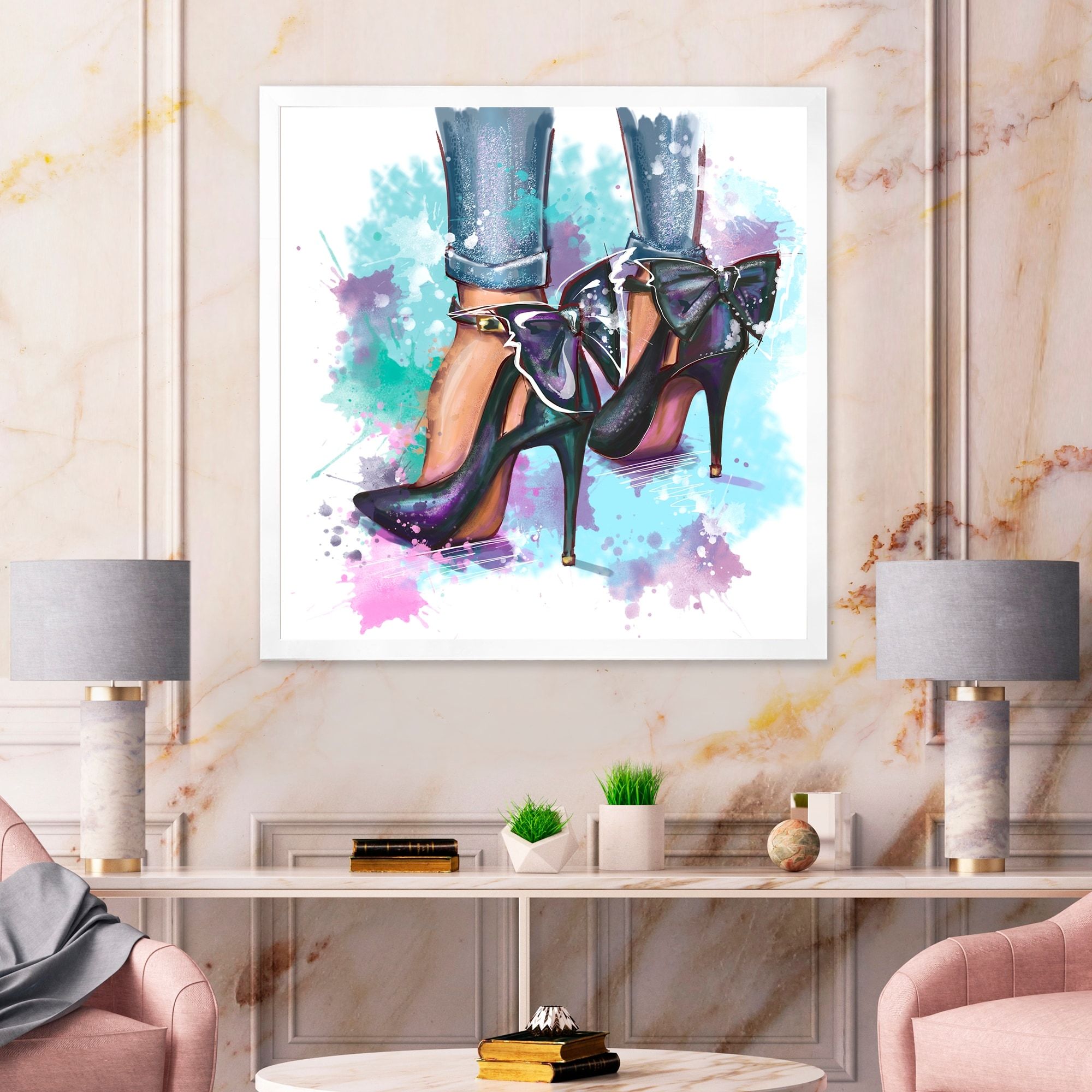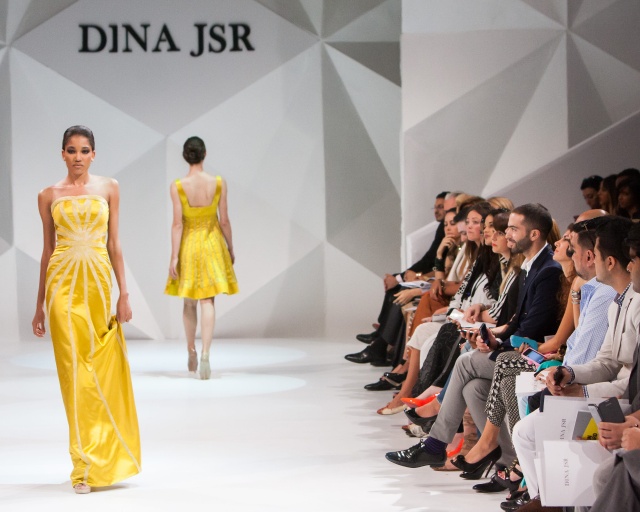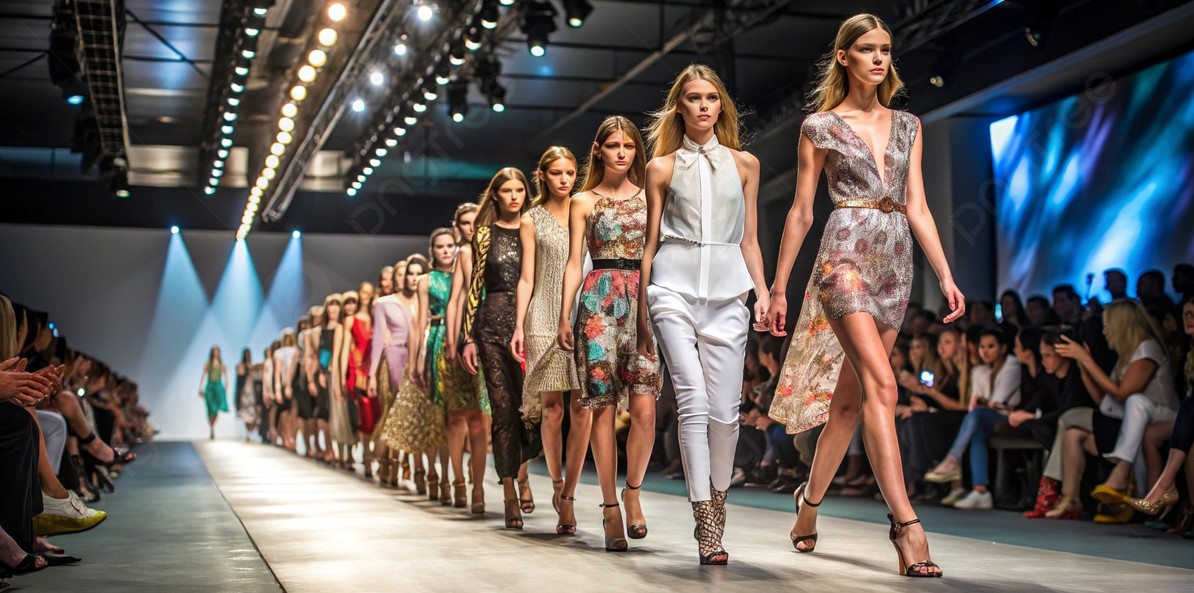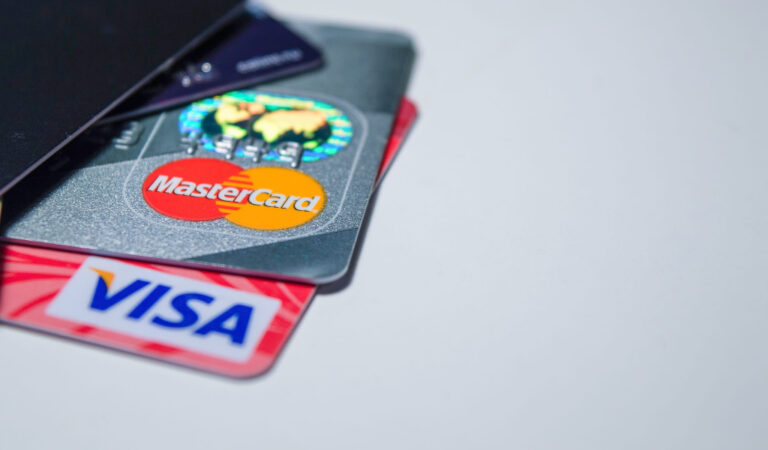The Unseen Engine of Transcultural Fashion Retail.
Your brand’s global success depends on more than design. It’s about how you communicate.
Don’t let language be a barrier. We provide specialized translation and localization to perfectly present your fashion brand to the world.
Transforming culture into commerce, we don’t just sell clothes—we curate desires. Our unseen work forges global style, making it relatable to every street.
We go beyond universal trends. Through data and deep insight, we build and translate a precise language of style, turning every garment into a story.
Our brand doesn’t just adapt to the market; it actively shapes it. By understanding the fabric of societies, we create fashion that resonates across borders.
Style Is Not Universal. It’s Engineered.
Speaking the Language of Style: The Unseen Engine of Transcultural Fashion Retail.
In the world of luxury, prêt-à-porter, and fast fashion, a brand’s success has always been tied to the quality of its craftsmanship. But in the hyper-connected, digital-first world of today, a brand’s true value is also measured by the quality of its communication. The global runway is no longer confined to Milan or Paris; it’s an ever-present digital spectacle, with looks debuting in one hemisphere and being discussed, purchased, and reviewed in another in a matter of moments. For a fashion brand with global ambitions, this interconnectedness presents both a magnificent opportunity and an unprecedented challenge.
This article will demonstrate that professional translation services and cultural localization are not mere administrative necessities but a strategic imperative for success. A fashion brand’s ability to speak its customer’s language, with authenticity and authority, is the single most powerful tool for forging brand loyalty, driving sales, and mastering global markets for retail.
Section 1: The Fashion Ecosystem—Beyond Dictionary Translation.
Fashion is a specialized ecosystem, a universe built on nuance, emotion, and intricate details. For this reason, professional translation services in this domain must be equally specialized. It’s not about swapping words; it’s about translating an entire brand universe. A fashion translator is a cultural ambassador, a trendspotter, and a linguistic expert all in one. The stakes are highest in four key areas of the brand universe: e-commerce, marketing campaigns, brand story, and legal compliance.
1.1. E-commerce: Where Sales are Won or Lost.
Your e-commerce platform is your most vital global storefront. It’s where the customer journey culminates in a sale—or a frustrated click away. The language used here is not merely descriptive; it is your ultimate sales tool. Meticulous and culturally attuned retail translation services for your e-commerce site can dramatically impact conversion rates and reduce costly returns.
1.1.1. Sensorial and Emotional Language: Converting Feelings into Sales.
A piece of clothing is more than just fabric and thread; it’s an experience. Fashion copywriters use evocative language to paint a picture and sell that experience. This is where the magic of transcreation begins. A «fluid silhouette» isn’t a literal term; it’s a feeling of effortless grace. A «crisp linen blazer» suggests a clean, sharp look perfect for warm weather. Translating these powerful, sensorial words requires deep cultural and stylistic understanding. A simple, direct translation often leaves the product description bland and uninspiring. A skilled fashion translator knows how to capture the emotional essence of terms like «bold statement piece,» «languid drape,» or «tactile texture,» finding the perfect cultural equivalent that resonates with the target audience. This is the core of effective professional translation services for fashion brands.
1.1.2. The Science of Sizing & Fit Guides: Eradicating High Return Rates.
One of the most significant financial drains for any global e-commerce retailer is a high product return rate, and misleading sizing information is a leading cause. The differences between US, EU, UK, Italian, and Asian sizing can be vast and confusing for customers. Expert retail translation services go far beyond simple chart conversions. They provide clear, culturally-relevant fit guides that explain how a garment is intended to sit on the body, using relatable terms and measurements. They might clarify if a certain style is «oversized» or «slim-fit» and offer specific recommendations to help customers choose the right size with confidence. This meticulous attention to detail is a direct investment in customer satisfaction and a powerful strategy to mitigate financial losses from returns.
1.1.3. Beyond the Language Barrier: Optimizing SEO for Global Search.
When a customer searches for a «double-breasted coat,» they may not use the same term in another language. They might look for a «trench coat,» a «peacoat,» or a phrase that translates to «coat with two rows of buttons.» For your products to be discovered in foreign markets, your retail translation services must be intimately linked to your global SEO strategy. This means accurately translating product-specific keywords and ensuring they align with local search queries. A proficient translator will research and integrate terms like “balloon sleeve,” “jacquard,” or “chambray” into your product descriptions in a way that aligns with how native speakers search for these terms. This granular approach ensures your products are not only available but also discoverable in the fastest-growing global markets for retail.
1.2. Marketing & Advertising Campaigns: The Imperative of Transcreation.
Your brand’s personality is its most valuable asset. It’s what connects with your audience on an emotional level and builds enduring loyalty. Translating a brand’s personality and voice is perhaps the most challenging and crucial task in global markets for retail.
1.2.1. Slogans & Taglines: Recreating an Emotional Connection.
A slogan is more than a catchy phrase; it’s a condensed expression of your brand’s promise and identity. A direct translation is almost guaranteed to fail. This is where the concept of transcreation becomes paramount—the process of recreating a message in a different language, ensuring its core meaning, tone, and emotional impact remain intact, even if the words are completely different. The iconic example of L’Oréal’s «Because you’re worth it» is a testament to this process. Its translations worldwide are uniquely powerful and resonate deeply with local consumer psychology, perfectly capturing the brand’s message of empowerment and self-worth. Professional retail translation services understand that a brand’s slogan is its heart, and they possess the linguistic agility to ensure that heart continues to beat in every market.
1.2.2. Social Media Content: Adapting Tone, Hashtags, and Cultural References.
Social media is the heartbeat of modern fashion. It’s a fast-paced, ever-changing environment where trends and memes evolve in a matter of hours. A static, one-size-fits-all approach to global social media is a recipe for irrelevance. Your brand’s voice on platforms like Weibo, Instagram, or TikTok must be authentic to the local culture. This includes everything from adapting the tone of your posts and using culturally-relevant hashtags to incorporating local slang and humor. A translator specializing in global retail marketing understands these nuances, helping your brand engage in a genuine conversation with its global followers rather than merely shouting at them.
1.3. Brand Story & Heritage: Aligning Values with Local Narratives.
A brand’s story is its soul. It’s the history, ethos, and commitment to craftsmanship or sustainability that defines its identity. Communicating this heritage in a new market requires expert translation that aligns the brand’s narrative with local values and stories. A brand built on artisanal craftsmanship in Italy, for example, needs to ensure its story of heritage and quality resonates with consumers in a market where they might prioritize technological innovation or comfort. The right professional translation services can highlight the aspects of your brand story that will resonate most with your target audience, turning a simple history lesson into a compelling and relevant brand narrative.
1.4. Legal & Compliance: The Unseen but Critical Layer of Protection.
While the glamour of marketing and e-commerce translation often takes center stage, a brand’s success also rests on the accurate translation of legal and compliance documents. This is a critical but often overlooked facet of professional translation services. A failure here can lead to lawsuits, product recalls, and severe financial penalties, far outweighing the cost of the translation itself. The types of documents that require flawless legal translation include:
- Care Labels & Composition Tags: In many countries, the material composition of a garment must be accurately and legally listed in the local language. A misstatement, such as labeling «100% lana» (wool) as «100% acrylic» in Italy, could result in customs delays or hefty fines.
- Terms and Conditions: The user agreements, return policies, and privacy policies on your e-commerce site must be translated with legal precision to protect both the consumer and the brand in a foreign jurisdiction.
- Customs and Import Documents: Accurate translation of these documents is vital to ensure a smooth flow of goods across borders and to avoid costly delays and seizure of products.
- Supplier Agreements: A brand’s contracts with international suppliers, manufacturers, and distributors must be perfectly translated to ensure all parties are aligned on expectations and legal obligations.
For a brand truly committed to expanding retail internationally, every detail matters, including the fine print. For more information, check our Retail Translation Pillar Page.
Unlock New Markets with Meticulous Retail Translation Services
Your brand deserves a dedicated translation team of fashion experts.
Poor translation risks your reputation. Our specialized retail translation services ensure every word captures your brand’s value, from product descriptions to marketing campaigns.
Section 2: The High Stakes of Getting it Wrong—A Reputation on the Line.
In the high-speed world of global retail marketing, mistakes are not just embarrassing; they can be catastrophic. What may seem like a minor linguistic error can have a cascading effect, damaging brand reputation, alienating customers, and costing a brand millions in lost sales and wasted campaigns. For every fashion brand with ambitions of expanding retail internationally, understanding these risks is a non-negotiable part of the strategic plan.
2.1. Unseen Landmines: Navigating the Cultural Faux Pas.
The most spectacular and damaging translation errors are often cultural. Language is steeped in cultural context, and a word-for-word translation can turn an elegant message into a jarring, or even offensive, misstep. Colors, symbols, numbers, and gestures all carry profound, and often hidden, meanings that can torpedo an otherwise brilliant marketing campaign. For instance, a campaign that heavily features the color white to symbolize purity and new beginnings, as is common in many Western weddings, would be met with confusion and disdain in parts of Asia where white is the color of mourning.
A classic case study of a cultural faux pas is Dolce & Gabbana’s 2018 «DG Loves China» campaign. The brand released a series of videos featuring a Chinese model struggling to eat Italian food with chopsticks. The videos were widely seen as disrespectful and insensitive, leading to a massive social media backlash, boycotts, and a complete collapse of their reputation in one of the world’s most lucrative global markets for retail. The blunder was a clear failure of cultural localization, a mistake that could have been avoided with proper consultation from a localization specialist or a team providing expert professional translation services. These mistakes are not just funny anecdotes; they are powerful examples of how a failure to understand cultural nuances can erode trust and lead to widespread consumer backlash.
2.2. Brand Dilution: The Peril of Inconsistent Communication.
Luxury is built on an unwavering commitment to quality—from the materials used to the marketing message that conveys exclusivity. When a luxury brand’s website copy or marketing materials are poorly translated, it’s an immediate signal of a lack of professionalism and care. An elegant product description that reads beautifully in its original language can become clumsy, generic, and uninspiring in a translated version. This inconsistent messaging dilutes the brand’s perceived value and destroys the carefully constructed image of exclusivity and quality.
2.3. The Financial Fallout: Costly Returns and Lost Sales.
The financial costs of poor retail translation services are far more direct and devastating than many realize. Misleading product descriptions or inaccurate sizing guides are not just inconvenient; they are a direct cause of high return rates. If a customer orders a sweater believing it’s a slim fit, only to receive an oversized garment, they will return it. Each return costs the brand not only in shipping and handling fees but also in the time and effort of customer service teams. This vicious cycle of returns and re-shipping can erode profit margins and tarnish the brand’s reputation for accuracy and reliability. A recent survey of e-commerce returns found that inaccurate product descriptions or visuals are a leading cause of returns, underscoring the vital importance of flawless retail translation services. By failing to communicate product details precisely, brands are actively sabotaging their own profitability and creating a poor customer experience that will deter future purchases.
2.4. Missed Connections: When Campaigns Fail to Land.
A campaign’s success often hinges on its ability to forge an emotional connection with the audience. This can be through humor, irony, a shared cultural reference, or a powerful message that resonates with local values. When a campaign is translated poorly, these vital emotional triggers are completely lost. A clever, witty tagline can become a nonsensical or even offensive phrase. An emotional story about craftsmanship can lose its gravitas and become a dry, technical summary. This failure to localize means that the entire marketing investment—from the creative concept and photography to the media spend—is essentially wasted. The brand is left wondering why its campaign, which performed so well in its home market, generated zero engagement in a new country. The answer lies in the silent failure of communication, a gap that can only be bridged by expert professional translation services. To gain a deeper insight into this topic, please visit our Retail Translations Pillar Page.
The Final Stitch That Perfects Your Global Garment.



An elegant product, when described poorly, loses its value. Our meticulous attention to detail ensures your products are presented perfectly, driving sales and building trust.

Section 3: The Role of the Translator—Cultural Ambassador and Trendspotter.
In a world where brands are striving to be global citizens, the traditional view of a translator as a simple service provider is dangerously outdated. For the fashion industry, the translator is an indispensable strategic partner. They are the linguistic architects who build bridges between your brand and new markets, ensuring your message is not just understood, but truly felt.
3.1. The Translator as Insider: A Fashion Expert on the Front Lines.
An exceptional fashion translator must be more than just bilingual; they must be a fashion industry expert. They need to understand the nuances between haute couture, prêt-à-porter, and fast fashion. They must be intimately familiar with the vocabulary of textiles, silhouettes, and design aesthetics. They are fluent in the language of trends, able to distinguish between a «balloon sleeve» from a specific season and a timeless «bishop sleeve.» This specialized knowledge is what enables them to create product descriptions and marketing materials that resonate with knowledgeable consumers and industry insiders alike.
3.2. The Translator as Cultural Consultant: Providing Invaluable Consumer Insights.
A top-tier translator for global retail marketing offers far more than just linguistic proficiency. They act as a cultural consultant, providing crucial insights into local consumer behavior. They understand shopping habits, preferred communication channels, and what values will resonate most strongly. For example, a market that prioritizes sustainability and ethical production will require a different narrative than one that values exclusivity and luxury. A skilled professional can advise on everything from the subtle differences in tone required for an email newsletter in France versus one in Italy, to which social media platforms are most effective for a retail translation services campaign in global markets for retail. Their cultural expertise allows them to anticipate potential pitfalls and suggest creative adaptations that transform a potential misstep into a powerful, locally-tailored success story.
3.3. The Translator as a Linguist: Navigating Dialects and Regional Preferences.
The Spanish of Spain is not the Spanish of Mexico. The Portuguese of Portugal is not the Portuguese of Brazil. A competent translator must possess the linguistic agility to navigate these regional and dialectal differences. They know that a term for «pants» in one region might be completely different in another. This linguistic precision ensures that your brand’s message is delivered in a way that feels natural and authentic to the local consumer, avoiding the stilted and generic tone that often comes from a one-size-fits-all translation approach.
Professional Translation Services are a Strategic Imperative for Global Growth
Your brand story, perfectly translated for every market.
Direct translation can destroy your brand’s essence. Our transcreation approach captures the emotional power and tone of your brand, ensuring your story resonates worldwide.
Section 4: Actionable Best Practices for Fashion Brands.
For any brand committed to expanding retail internationally, knowing where to go is as crucial as knowing what to say. Navigating the world of retail translation services can seem complex, but by following a few critical best practices, brands can transform the process from a logistical hurdle into a powerful strategic advantage. Implementing these measures ensures that your investment in professional translation services yields a maximum return on brand integrity, customer trust, and, most importantly, global growth.
4.1. Work With Specialists, Not Generalists.
This is perhaps the single most important piece of advice for any fashion brand. While a generalist translator may be competent with everyday language, they are simply not equipped to handle the intricate, specialized vocabulary of the fashion industry. They lack an understanding of the difference between a «double-breasted coat» and a «pea coat,» or the subtle nuance that separates a «fluid silhouette» from a «draped» one. Look for translation agencies or freelancers who have a proven track record in fashion and retail. Their portfolio should showcase an understanding of everything from high-end global retail marketing copy to precise legal disclaimers. Partnering with a specialist is not a luxury; it’s a fundamental requirement for success in global markets for retail.
4.2. Demand Transcreation for Marketing Copy.
As we’ve established, a marketing campaign’s power lies in its ability to evoke emotion and forge a connection with the consumer. This requires more than a literal translation; it requires transcreation. When you are sourcing your retail translation services, make it a point to ask for a transcreation portfolio. For a slogan or a campaign concept, request examples of how they would adapt the message for a different culture, not just translate the words. The flawless localization strategy of luxury e-tailer Net-a-Porter is a masterclass in this practice. The brand’s product descriptions and editorials are not merely translated but are rewritten by native-speaking fashion writers in different regions, ensuring the language is not only accurate but also stylistically appropriate and culturally relevant to local trends and consumer tastes. This commitment to transcreation has allowed Net-a-Porter to cement its status as an authority on fashion in diverse global markets for retail.
4.3. Provide Comprehensive Brand Guidelines.
You would never ask a designer to create a new collection without a mood board, color palette, or detailed sketches. The same principle applies to translation. To ensure consistency across all your translated content, from product pages to social media campaigns, you must provide your translation partner with a robust set of brand guidelines. This is a critical step for expanding retail internationally. Your brand guidelines should include:
- A Glossary of Key Terms: A comprehensive list of your brand’s specific terminology, including product names, design features, and brand-specific jargon. This is crucial for maintaining consistency and avoiding confusion.
- Mood Boards & Style Guides: Visual aids and descriptions that articulate your brand’s voice, tone, and aesthetic. Do you use casual, witty language or a more formal, aspirational tone? A translator needs to understand this to replicate it authentically.
- Previous Campaign Examples: Sharing past successes and failures can help your translation partner understand what has worked for your brand and why.
This collaborative approach transforms the translator from a contractor into an extension of your marketing team, deeply invested in preserving your brand’s identity.
4.4. Implement a Robust Review Process.
Even with the most specialized professional translation services, a multi-step review process is essential. Final translations should always be reviewed by a native-speaking brand manager or a trusted marketing lead who lives and works in the target region. This is the ultimate litmus test for cultural accuracy and brand alignment. This final check-in ensures that:
- The messaging aligns with current cultural sensitivities.
- The tone is appropriate for the local consumer.
- The language feels natural and not like a translation.
This final check is a crucial safeguard against costly errors and a proactive step in building long-term trust in a new market. It’s the final, crucial step to guarantee your brand’s messaging is perfectly tailored and ready for the world.
The Art of Fashion Communication.

Translating style, not just words.
In the intricate world of fashion, every detail matters. We ensure your brand’s voice, vision, and values are communicated flawlessly in every dialect. Our specialized retail translation services go beyond the dictionary.
Our expert translators understand the vocabulary of design, fabrics, and trends, guaranteeing that your products are presented with the authority and emotion they deserve.


The secret to global success? Your message.
Your brand’s quality is defined by more than its craftsmanship. It is defined by how perfectly its story is told to the world.
Section 5: The Next Frontier – Emerging Markets and the Best Languages for Retail.
For any brand with a strategic vision for expanding retail internationally, knowing where to go is as crucial as knowing what to say. The landscape of global markets for retail is in constant flux, with new regions and demographics emerging as power players in the fashion industry. While established markets in Europe and North America remain vital, brands that fail to look toward the next frontier risk being left behind. Identifying the best languages for retail in these high-growth regions is a strategic imperative.
5.1. The Best Languages for Retail in Emerging Markets.
5.1.1. Latin America: A High-Growth Market in Fluent Spanish and Portuguese.
Latin America is a vibrant and rapidly expanding market for fashion. With a burgeoning middle class and a population that is highly engaged with social media and e-commerce, the region presents a massive opportunity. However, a one-size-fits-all approach to language is a guaranteed way to fail. While Spanish is the dominant language across most of the continent, it is not a monolithic entity. The Spanish spoken in Mexico, for example, has significant differences in vocabulary and tone compared to the Spanish of Argentina or Spain. For a brand to succeed, its professional translation services must be finely tuned to these regional variations.
Similarly, Brazil represents a colossal market in its own right. The Portuguese spoken in Brazil is distinct from that of Portugal, with its own unique cultural references, idioms, and slang. A brand’s commitment to using authentic, culturally-attuned Brazilian Portuguese is a powerful signal of respect and a key to building trust with this influential consumer base. Investing in dedicated retail translation services for these specific markets is essential for a successful launch.
5.1.2. Southeast Asia: Navigating a Tapestry of Tones and Trends.
Southeast Asia is a collection of diverse and dynamic economies with a collective fashion market that is growing at an astonishing pace. From the tech-savvy consumers in Singapore and Malaysia to the immense populations in Indonesia, Vietnam, and the Philippines, this region is a microcosm of global commerce. A brand that wants to engage with this market must be prepared to translate its content into multiple key languages, including:
- Bahasa Indonesia: The lingua franca of Indonesia, a country with over 270 million people.
- Thai: Essential for the vibrant fashion scene in Thailand.
- Tagalog: The primary language of the Philippines, a country with a highly Westernized consumer culture.
- Vietnamese: Gaining importance as Vietnam’s economy and middle class expand.
The professional translation services required for this region must not only be linguistically accurate but also culturally sensitive. For instance, a marketing campaign that would be successful in Singapore might fall completely flat in a more conservative market like Indonesia. The key to global retail marketing in this region is to recognize and respect its incredible diversity.
5.1.3. The Middle East & North Africa (MENA): Unlocking the Arabic-Speaking World.
The MENA region, with its affluent consumers and love of luxury fashion, is another critical market for brands. The dominant language is Arabic, but as with Spanish, significant regional variations exist. Modern Standard Arabic (MSA) is used for formal writing, but a brand’s marketing copy, social media, and product descriptions must also be translated into a more conversational, regional dialect to truly resonate. This requires a nuanced approach and a deep understanding of local consumer habits. The immense potential for expanding retail internationally in this region makes expert Arabic retail translation services a non-negotiable part of any expansion plan.
Master Global Retail Marketing with Flawless Localization
Avoid costly cultural mistakes and build brand trust worldwide.
A cultural misstep can be catastrophic. Our experts help you navigate local customs and consumer behaviors, so your brand can connect with confidence.
Section 6: The Future of Fashion Translation—The AI Revolution and the Human Touch.
The rapid advancement of artificial intelligence and machine translation has prompted many businesses to question the continued need for human expertise. While tools like Google Translate and DeepL can offer quick, low-cost translations, they are fundamentally ill-equipped to handle the nuances of the fashion industry.
6.1. The Limits of AI in Fashion Translation.
AI-powered translation is based on algorithms that analyze vast amounts of text to identify patterns. While this works well for technical or informational content, it fails spectacularly with the emotional and creative language of fashion. An AI cannot understand a «bold statement piece,» because it does not have the cultural context to understand what makes a piece of clothing bold. It cannot grasp the concept of «fluidity» in a fabric or the feeling of «tactile» cashmere. These are human concepts, understood through experience and cultural osmosis.
For a brand to maintain its luxury and aspirational status, its copy must be crafted with an emotional intelligence that only a human professional can provide. The subtle humor, irony, and cultural references that make a campaign feel authentic are completely lost on a machine. This is why human-led professional translation services are still the gold standard in global retail marketing.
6.2. The Future is Hybrid: A New Model for Efficiency.
While AI will never replace human translators in the fashion industry, it is a powerful tool for increasing efficiency. The future of dedicated retail translation services is likely to be a hybrid model. AI can be used to handle high-volume, low-stakes content like back-end data, internal documents, and basic product descriptions. This frees up human translators to focus on high-value tasks that require creativity and cultural expertise, such as:
- Transcreating marketing campaigns and slogans.
- Writing emotionally resonant blog posts and editorials.
- Localizing social media content for specific cultural nuances.
- Conducting in-depth cultural consultations for new market entries.
This hybrid approach allows brands to streamline their translation workflows while ensuring that the core of their brand identity remains authentically human and culturally relevant.
From Local Threads to Global Tapestry.
Weaving Your Brand’s Narrative Worldwide.


Connect with consumers on a deeper, more personal level.
Conclusion: Weaving a Seamless Global Tapestry.
In the grand and intricate tapestry of global retail marketing, a brand’s success is defined by more than just its design prowess. The fabric of its identity is woven with every word it communicates to its audience, and the dialogue between a brand and its customer is a fragile and essential connection. As this article has demonstrated, in the modern landscape of expanding retail internationally, the professional translator is not a mere interpreter but an indispensable ally.
We have explored how expert retail translation services are the unseen engine driving a brand’s global growth—from the meticulous art of converting sensorial e-commerce language into sales, to the strategic transcreation required to make slogans and campaigns resonate on a deep, cultural level. Conversely, we have seen the high stakes of getting it wrong, where a simple linguistic misstep can lead to brand dilution, costly financial losses, and a complete failure to connect.
The fashion translator, as we have argued, is a multi-faceted professional: an industry insider who speaks the language of trends, a cultural consultant who understands local consumer behavior, and a linguistic artist who preserves a brand’s unique voice. Investing in these specialized professional translation services is not an expenditure; it is a profound investment in brand integrity, customer trust, and, ultimately, sustainable global growth.
It is the final, crucial stitch that completes the garment. It ensures that every thread, every color, and every detail of your brand’s identity is presented perfectly to the world, without a single wrinkle. For any brand looking to truly master global markets for retail, speaking the language of style in every dialect is no longer optional—it is the very essence of success.
Your Global Voice, Recreated for Local Markets.
We are global experts who go beyond words, adapting your brand’s unique voice and style with linguistic precision to resonate with diverse cultures and succeed globally.
Have Questions? We Have Answers.
Our professional team is here to help. Reach out to discuss your specific needs for expanding your retail brand internationally.
Ready to Unlock Your Brand’s Global Potential?
Transform your brand’s presence in new markets with our specialized translation and localization solutions. Contact us today to get started.






